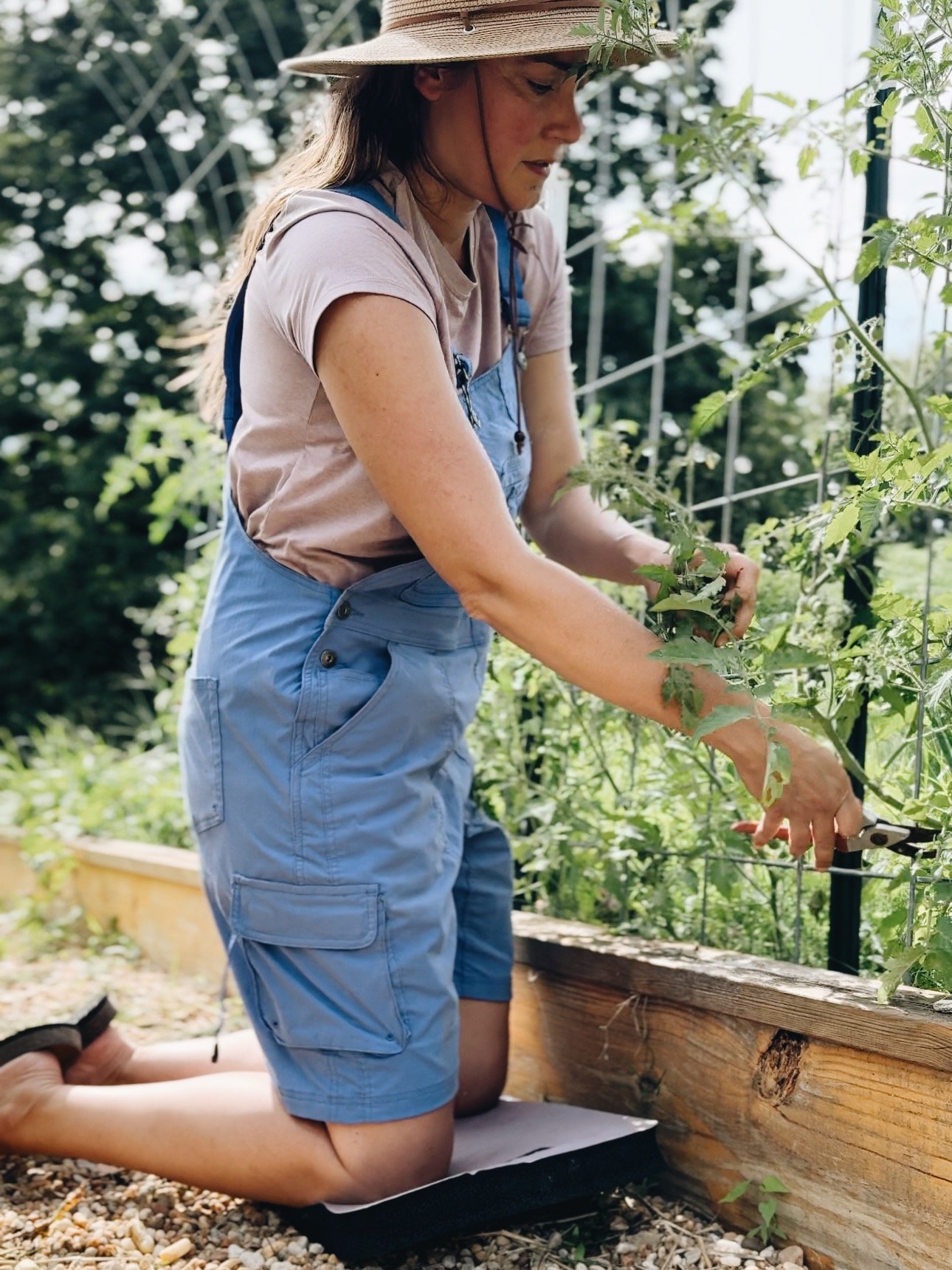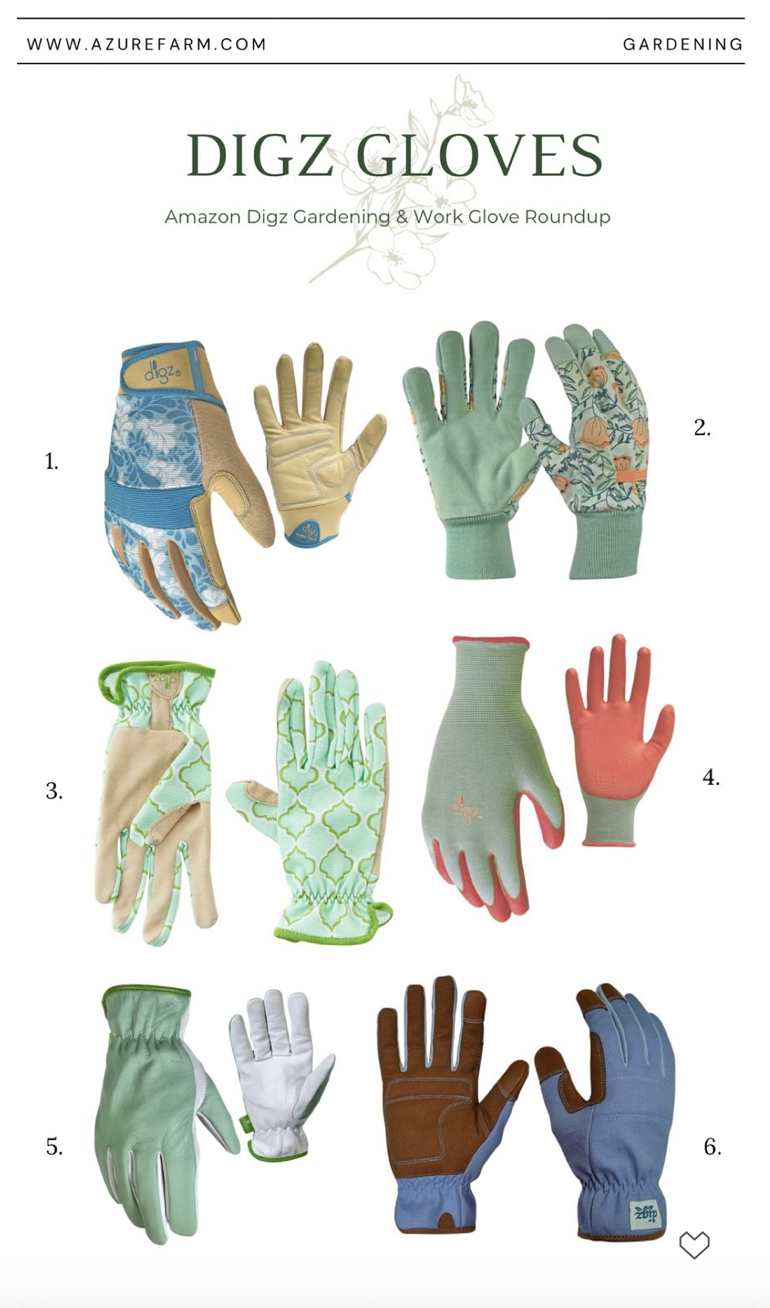5 Tips To Having A Successful Summer Garden
Hi Friend, gardening has been a big passion of mine for a very long time now, especially summer gardening!
It is a rewarding hobby that provides fresh produce and a sense of accomplishment. It really is amazing to eat something straight from the garden that you have grown yourself!
However, it took me a few years and a lot of trial and error (and dirty nails!) to get our garden to where it is today and to have bountiful harvests.
A bountiful summer vegetable garden requires more than planting seeds and waiting for them to grow (if only!). Proper care and attention are essential to ensuring your garden thrives.
Here are five key things I have found over the years to be the success of our garden, which I hope will help you cultivate a successful summer garden: pruning, proper support, mulching, adequate sun and water, and proper harvesting techniques.
Continue reading to discover more about each of these 5 key things!
This post is sponsored by Digz Gardening
1. Pruning
Pruning is a critical practice in maintaining a healthy and productive vegetable garden. It involves selectively removing parts of plants, such as dead or diseased branches, blossoms, and even the produce itself, to improve their overall health and yield.
Here’s why pruning is essential:
Benefits of Pruning
Improves Air Circulation: By removing excess foliage, pruning allows better air circulation around plants, reducing the risk of fungal diseases and promoting healthier growth.
Enhances Light Penetration: Pruning helps ensure that sunlight reaches all parts of the plant, which is vital for photosynthesis and the development of fruits and vegetables.
Stimulates Growth: Regular pruning encourages the growth of new shoots and flowers, leading to increased yields and more robust plants.
Prevents Overcrowding: Removing excess growth prevents plants from becoming too dense, which can lead to competition for nutrients and water.
How to Prune
Identify the Right Time: Prune early in the morning or late in the afternoon when the temperatures are cooler to minimize stress on the plants.
Use Sharp Tools: Always use sharp, clean tools to make clean cuts and avoid damaging the plants.
Focus on Dead or Diseased Parts: Remove any dead, diseased, or damaged branches first to prevent the spread of infections.
Thin Out Overgrown Areas: Trim back overgrown areas to improve air circulation and light penetration.
2. Proper Support
Providing proper support to your plants is crucial for their growth and productivity. Many vegetable plants, such as tomatoes, cucumbers, and beans, require support to grow upright and avoid damage.
Here’s why proper support is essential:
Benefits of Proper Support
Prevents Breakage: Supports help prevent stems from breaking under the weight of the fruits, ensuring healthy development and reducing waste.
Improves Airflow: Keeping plants off the ground enhances air circulation, reducing the risk of diseases and promoting healthier growth.
Facilitates Harvesting: Supported plants are easier to access, making harvesting simpler and more efficient.
Maximizes Space: Vertical growing techniques, such as trellising, allow you to maximize your garden space and grow more plants in a smaller area.
Types of Support
Stakes: Wooden or metal stakes are ideal for plants like tomatoes and peppers. Tie the plants to the stakes with soft ties to avoid damaging the stems.
Cages: Tomato cages provide support from all sides and are great for bushy plants that tend to sprawl.
Trellises: Trellises are perfect for climbing plants like cucumbers and beans. Gently tie the plants to the trellis to train them to grow vertically.
3. WEEDING & Mulching
Mulching is a simple yet effective way to enhance the health and productivity of your garden. By covering the soil with a layer of organic or inorganic material, you can control weeds, retain moisture, and improve soil health.
Here’s why mulching is essential:
Benefits of Mulching
Weed Control: Mulch suppresses weed growth by blocking sunlight, reducing competition for nutrients and water.
Moisture Retention: Mulch helps retain soil moisture by reducing evaporation, ensuring that your plants have consistent access to water.
Temperature Regulation: Mulch acts as an insulating layer, keeping the soil cooler in summer and warmer in winter.
Soil Improvement: Organic mulches, such as straw or compost, decompose over time, adding valuable nutrients to the soil and improving its structure.
How to Mulch
Choose the Right Mulch: Organic mulches like straw, grass clippings, and wood chips are ideal for vegetable gardens. Inorganic options, such as plastic sheeting, can also be used but do not provide the same soil benefits.
Apply Correctly: Spread a 2-4 inch layer of mulch around your plants, leaving a small gap around the stems to prevent rot.
Replenish as Needed: Organic mulches decompose over time, so replenish the mulch layer as needed to maintain its effectiveness.
IMPORTANCE OF WEEDING
How often? Weeding for just 15 minutes a day will help keep your garden under control and aid in the success of your garden. Most plants do not do well and compete for nutrients when weeds abound. By mulching you can help suppress weeds and also make them easier to remove.
4. Adequate Sun and Water
Providing your plants with adequate sun and water is fundamental to their growth and productivity. Vegetables need specific amounts of sunlight and water to thrive.
Here’s why this is essential:
Importance of Sunlight
Photosynthesis: Sunlight is crucial for photosynthesis, the process by which plants convert light energy into chemical energy, fueling their growth.
Fruit Development: Adequate sunlight is necessary for the development of fruits and vegetables, influencing their size, flavor, and nutritional content.
Importance of Water
Growth: Water is essential for cell expansion, nutrient transport, and overall plant growth.
Preventing Stress: Consistent watering prevents plants from becoming stressed, which can lead to poor growth and reduced yields.
How to Ensure Adequate Sun and Water
Sunlight: Most vegetables need at least 6-8 hours of direct sunlight daily. Choose a sunny spot for your garden and consider using reflective surfaces to maximize light exposure.
Watering: Water your garden deeply and consistently. Aim to provide about 1 inch of water per week, either through rainfall or irrigation. Use soaker hoses or drip irrigation systems to deliver water directly to the roots and minimize evaporation.
5. Proper Harvesting
Proper harvesting is crucial to ensure that you get the most out of your garden. Knowing when and how to harvest your vegetables can impact their quality and the overall productivity of your plants.
Here’s why proper harvesting is essential:
Benefits of Proper Harvesting
Maximizes Yield: Harvesting at the right time ensures that you get the best yield from your plants, as leaving fruits on the plant for too long can reduce production.
Improves Quality: Harvesting at the peak of ripeness ensures the best flavor, texture, and nutritional content of your vegetables.
Promotes Continued Growth: Regular harvesting encourages plants to produce more fruits and vegetables, extending the growing season.
How to Harvest
Timing: Harvest vegetables when they are ripe but not overripe. Each vegetable has its own indicators of ripeness, such as color, size, and firmness.
Tools: Use clean, sharp tools to cut vegetables from the plant, minimizing damage and reducing the risk of disease.
Technique: Handle vegetables gently to avoid bruising or damaging them. For root vegetables, gently loosen the soil before pulling them out.
By following these five tips—pruning, providing support, wedding/mulching, ensuring adequate sun and water, and practicing proper harvesting techniques—you can cultivate a successful and bountiful summer vegetable garden friend.
With a little care and attention, your garden will thrive, providing you with fresh, delicious produce this summer!
If you want to learn more about gardening and growing a variety of vegetables, I have a whole gardening blog section where you will find many resources!
We also have a HOMEGROWN platform, giving you even more resources and video tutorials. More on this below!
Love, Annette xx
You can find many of my favorite Digz Gardening products at Home Depot. My favorite are their gloves and kneeling pad. It makes life so much easier when weeding and working in the garden.
CLICK on the items below to get them!
CLICK BELOW to go to my favorite round up of Digz Gardening Gloves!
HOMEGROWN COMMUNITY
There’s nothing like the excitement of learning a new thing - how to garden, how to make delicious recipes from your garden, or how to care for baby chicks.
But the truth is that without understanding the basics, these fun experiences can become a headache. Bugs eat your tomatoes before you do. Recipes don’t taste like you hoped. Those chicks get sick or worse, don’t make it.
We have been creating and curating content from people just like you who have already lived and learned, and we are excited to share with you the steps we took to find success so you don’t have to repeat the same mistakes we have made.
From food to farm to family and so much more, we find ways to share tried and tested ideas in your own kitchen, garden, farm, and home.
A growing library of over 100 videos
Watch and enjoy on any device
Connect with a community of lifelong learners
Access to on-demand workshops and step-by-step tutorials
Fun Instructions for Rookies or Rockstars
Curated courses & world-class instruction
Affordable subscriptions with no surprise extra costs
Special subscriber offers & personal support for your country living questions.
HomeGrown is here to teach you not just what to do but how to do it, too. Oh…and we have some fun along the way.
For a small fee of $5.99/month or $49 for the year, you have years of experience, trial and error, and knowledge right at your fingertips.












